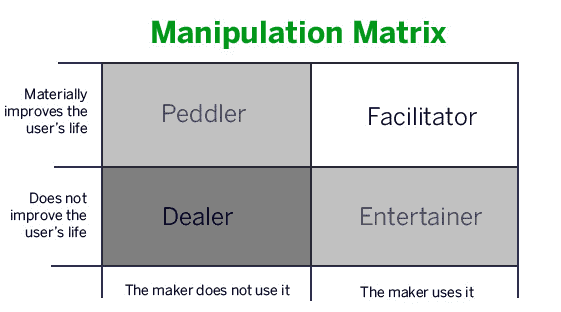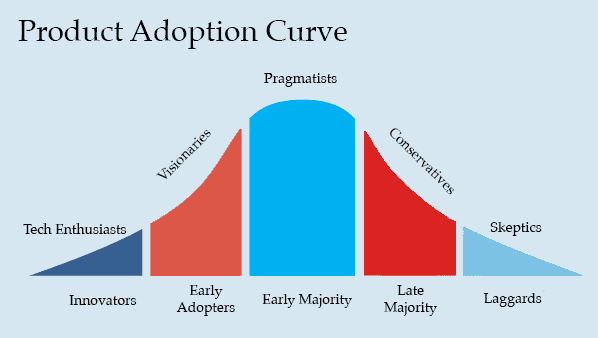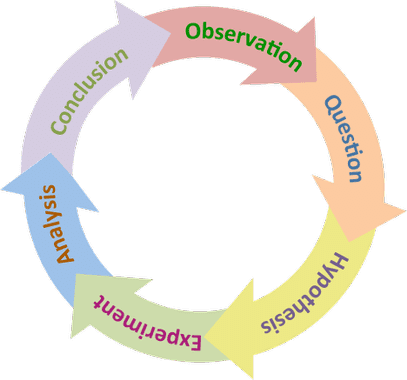I’ve worked for 3 different startups so far, each with a single common goal: To create a product that people like and find its product market fit.
However, some of these startups were unable to find their product market fit and had no other choice but to put an end to the great adventure that had been started.
This product creation can be risky, expensive, tortuous, especially for entrepreneurs who do not have the right knowledge or the right tools to achieve their goals.
And that’s where this product creation framework comes into play, based on Koudetat season 2 podcasts. If you don’t know Koudetat, have a serious look at their website (https://www.koudetat.co/), you will find everything you need, and specially training to help you create your startup and your first product.
You can also find the podcasts on Spotify, Itunes and other streaming platforms.
Disclaimer : I’m not related, in anyway, to Koudetat. I just found their content really helpful and decided to condense it here, on my website.
This post is a resume from the podcasts of the season 2 and is structured around 7 main axes which are :
- Validation of market interest.
- Understanding the market.
- Creation of the first version of a product.
- Observe user behavior.
- Product improvement via feedback loop.
- Organization and execution.
- Delegation of product management.
Each of these steps is essential in order to be able to create a product, whatever it is, that can be scaled, has a product market fit and can be adopted by the largest number of users.
I. Validation of market interest
There are several things to consider when deciding whether there is a market to be taken, and whether it will be receptive to a possible product. This is an exhaustive list of what to do.
1) Think of at least 20 people who could use the product/service.
If you can do that, it’s a good point for you !
2) You have to listen to the market and the people in it.
Listen to your family, your colleagues, the people around you. We all have issues with something in this world, something that can maybe be fixed?
3) Know how to seize opportunities (example: Uber, Airbnb, …).
Let’s take Airbnb as example :
Let’s go back to the start. It’s late 2007 in San Francisco. Airbnb founders Brian Chesky and Joe Gebbia just moved from New York. Without employment, they were having trouble paying their rent and were looking for a way to earn some extra cash. They noticed that all hotel rooms in the city were booked, as the local Industrial Design conference attracted a lot of visitors.
The youngsters saw an opportunity. They bought a few airbeds and quickly put up a site called “Air Bed and Breakfast.” The idea was to offer visitors a place to sleep and breakfast in the morning. They charged $80 each a night. The idea succeeded and the first Airbnb guests were born: a 30-year-old Indian man, a 35-year-old woman from Boston and a 45-year-old father of four from Utah sleeping on their floor.
This little story tells us that the Airbnb co-founders found an opportunity, tested it and discovered their future service. Try to do the same when you have the occasion!
4) Which problem is solved?
It’s easy to know this if you are a market player yourself.
5) Check manipulation matrice from Nir Eyal.
You can find it here : https://www.nirandfar.com/hooked/
Questions that a company must ask itself :
- Is my product used?
- Does it improve people’s lives?
-
If it’s “no” to both questions, then the product is immoral or you are a “DEALER”, this is not the best position for an entreprener.
6) Data collection and behavioral analysis
This is done by observing the frustrations and motivations of the future users. They use specifics sentences to describe their F & M.
Frustations => “I can’t do it…”, “I’m wasting time…”, etc.
Motivations => “I would like to…”, “I want to…”, etc.
Thanks to this we can have a sensible, emotional, salesmanlike and intense speech.
The content of our website will then be articulated around this speech.
7) Creation of a LANDING PAGE
One of the best structure that actually work for a landing page is:
Section 1: The product, what it does, the value offered.
Section 2: Difference from the competition, how does it work, why is our product better?
Section 3: Emotional content. Why is it better? Why does it improve people’s lives?
Pre-footer: Call To Action (CTA) => Email for newsletter or sign up button or buy button.
Footer: Sitemap, links, credits, etc.
Please, have a look at one of my recent project called Reflect, you can see that this type of structure is quite good.
8) Using acquisition channels to get visitors
Forums, social networks, display & social ad, seo, sem, referral program … (19 different existing channels, I will not list them all, you can easily find it on google).
II. Understanding the market
1) Phone call
Make One To One phone calls with the first users => phone 10x more powerful than email. 30 mins max/calls
Unwinding the phone call, how to do:
- Thank the customer and be nice
- Ask for the context of the purchase or discovery of the product?
- Define why we are calling (to get feedback, to know the M and F, etc.)
- Ask for the customer’s story?
- Ask the customer how he or she would like the product to be/not be?
- Ask why the product is of interest?
- Thank the customer for their feedback.
The phone call will be a very important qualitative input, because all information is good to take. Try to play on emotions and F/M, so the customer really think that you listen to him.
Don’t hesitate to ask to clarify a customer’s answer when it is not understood.
2) Definition of a persona
A persona, depending to the context, can refer to either the public image of one’s personality, or the social role that one adopts, or a fictional character. - Wikipedia
You have to understand the client. Who is he or she? What does he or she do in life? Why did he buy the product/service?
3) Sending a questionnaire to potential clients/registrants
When you have done the phone call, and defined personas, you can send your first customer a questionnaire.
In it you will have a condensing for all the phone call you did.
You really should use open questions : replace the “is it…” with “to what extent…“.
Instead of phone call, this form will be quantitative data.
4) Pricing
Put the most expensive price you would be willing to pay for a product/service of this type. According to the feedback call + questionnaire, you will have the possibility to lower the price.
It is easier to sell to the first customers than to the last ones.
Principle of the adoption curve :
- Innovative (Tech afficionados)
- Early-adopters (Trendy users)
- Early-majority
- Late-majority
-
Laggards : difficult to sell to them
III. Creation of the first version of a product
1) Simple & minimalist version
KISS principle (Keep It Simple and Stupid). Try to keep your first version with less functionalities, but good one.
Iterate fast and often.
2) Develop this version yourself if possible, otherwise take freelancers.
Software:
- Choosing the right stack, it will depend on the project requirements, the scalabilty needed, the development speed, and the safe and security concerns. https://www.kivodaily.com/technology/guide-to-choose-the-right-tech-stack-for-web-development-in-2021/
- Choosing the right tools (product hunt, …). There is plethora of tools for all your needs.
- If you don’t have developers with you: Go on with the no-code tools ! (Webflow, Bubble, etc)
Hardware:
- Some prototyping? Use 3D printer.
- Some modeling: Bender / Sketch
Rapid prototyping tools save time to allow time for feature development. Don’t hesitate with the use of Zapier, Chatfuel, Google Sheet, etc.
You have to ask yourself : How can we do as little as possible to solve user motivations and frustrations?
For the sale part: Use Stripe, Shopify, Squarespace, cash or wire transfer.
Don’t forget, the initial version will allow you to test the market!
IV. Observing user behavior
1) Creating a product is a scientific process
6 steps: observation, question, hypothesis, experimentation, analysis and conclusion => infinite cycle / iterative process
2) Talking to users
You should constantly talk to your users and get feedback:
What do you like about the product? What do you like less?
When do you use it? How do you use it? Why do you use it?
Repeat the end of an answer with the last word in the tone of the query.
Ex: ”- I like this aspect. - Oh, this aspect?”
3) Tracking
KPI (key performance indicator) measurement tool, data collection, etc.
- How many people registered on the site per week? per month?
- How many sales over the month? Evolution compared to last month?
- And more and more
The KPIs will depend of your market and your product.
Use of the AARRR funnel :
- Acquisition: 1st visitor
- Activation: 1st user experience
- Retention: The user comes back and uses the product?
- Referral: The user talks about it around him?
- Revenue: Gaining money?
More the metric is low in the funnel, more it is important.
Useful tools to get KPIS: Hotjar, Mixpanel or Google Analytics.
V. Improvement via feedback loop
1) Engaging users in conversation
It exist many ways to engage conversation with your users:
You can use chatbox on your website with Intercom or Crisp.
You can have a newsletter and send recurrent emails to your visitors.
You can also of course use social networks (Facebook, Instagram and co).
2) Accompany users to give you “good” feedback
If the value of your product is recognized by the user, meaning, it’s saving time, money or give social recognition, you will have the creation of a bubble of honesty.
If people pay a lot for the product/service, they will be honest.
By existing love of the product, when modifying an existing feature to working well, you will get real feedback.
Cash should drive the product improvements in post product market-fit.
3) Prioritize the improvements
Careful with the relevance of the feedbacks.
Not all feedback should be kept, bcause tt is weighted by the added value of the feature (time spent, potential money gain).
Anything you can sell that doesn’t exist yet should be able to be developed.
VI. Organization and execution
Try to follow an agile development for your product.
Do only sprint for 1-2 weeks, depending of the User Stories you’ve got.
Don’t avoid weekly meeting, they are important to know where you are, what you have to do and where you go.
You should always follow the AARRR funnel to design new features.
A good product decision necessarily leads to growth.
More on agile development here : https://www.atlassian.com/agile.
VII. Delegating product management
The team must be composed of at least :
- Product manager
Hard skill => Logic of dev, knows how to build a user path.
Soft skill => Understands the target business, good understanding with the UX designer, sociable, understanding. - UX/UI Designer
Out of order: Sketch, Photoshop.
Soft Skill: Knows how to build a user path, creative. - Dev back-end + dev front-end or dev full-stack
The full-stack dev can be useful at the beginning of the project because it will be able to work on all the technical points. A working team is in constant evolution and has the hards skills and softs skills to create a scalable product/business model
Conlusion
This framework is not an exact science, it must of course be adapted to your needs.
However, Koudetat has had enough opportunity to test it, so you should really use it as a basis for creating your next product/service.
Feel free to comment what you think about it, as well as the different possible points of improvement for this framework.
Have you also had the opportunity to test it? If so, I would be happy to discuss it with you .
I’m currently testing it for my final Master project at EPITECH (Reflect), and it seems to be bearing fruit.


